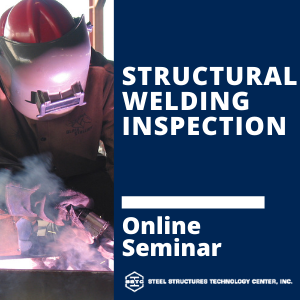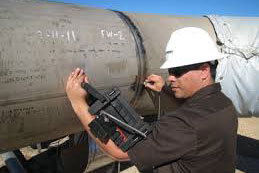The Ultimate Checklist for Welding Inspection Gilbert Arizona: Ensuring Safety and Accuracy
The Ultimate Checklist for Welding Inspection Gilbert Arizona: Ensuring Safety and Accuracy
Blog Article
A Comprehensive Guide to Welding Evaluation: Comprehending Requirements, Techniques, and Ideal Practices for Quality Control

Welding inspection plays a crucial function in guaranteeing the structural stability and safety of bonded elements, requiring a comprehensive understanding of sector requirements such as those developed by AWS and ASME. As we check out these critical aspects, it comes to be obvious that the implications of welding assessment extend much beyond compliance, welcoming a better exam of exactly how these procedures shape industry criteria and practices.
Value of Welding Evaluation
Welding examination plays a vital role in making certain the integrity and security of bonded structures. It is a crucial process that confirms that welds comply with predefined specifications, which is crucial in numerous industries, consisting of construction, vehicle, and aerospace. By performing comprehensive assessments, possible issues such as cracks, incomplete combination, and porosity can be recognized early, preventing devastating failings that might cause crashes or pricey repairs.
The importance of welding evaluation prolongs beyond simple conformity with guidelines; it additionally cultivates trust fund with stakeholders. Customers and governing bodies anticipate assurance that the frameworks they depend on are built to withstand operational stresses. Furthermore, effective welding inspection practices add to long-term durability and performance of the structures, ultimately leading to lowered upkeep expenses.
Additionally, welding evaluation advertises a society of high quality within organizations, urging adherence to finest methods and continuous renovation. By integrating examination procedures into the welding workflow, business can enhance their reputation and develop themselves as leaders in quality control. In verdict, the relevance of welding evaluation exists in its capability to protect lives, make certain structural reliability, and maintain industry criteria, making it a crucial element of welding operations.
Secret Industry Requirements
Guaranteeing conformity with essential sector requirements is essential for preserving the top quality and security of bonded structures. Different organizations establish these criteria to promote ideal practices in welding and assessment. Among one of the most recognized are the American Welding Society (AWS) and the American Culture of Mechanical Engineers (ASME), which supply detailed guidelines and specs for welding procedures and evaluation standards.
AWS standards, such as AWS D1.1 for structural welding, synopsis requirements for materials, style, and screening to ensure the stability of welds. In a similar way, ASME codes, including ASME Area IX, control the qualification of welders and welding procedures, making sure regular quality in industrial applications. Worldwide, the ISO 3834 basic highlights high quality needs for fusion welding, supplying a structure for companies to demonstrate compliance with global best practices.
Conformity with these criteria not just enhances the dependability of welded frameworks yet additionally minimizes threats associated with architectural failings. Furthermore, adherence to industry standards is often a prerequisite for regulatory authorizations and can dramatically influence job specifications. Inevitably, understanding and carrying out these crucial requirements are important for effective welding inspection and quality guarantee.
Assessment Techniques Summary
Efficient welding evaluation relies on a variety of techniques made to examine the quality and honesty of welds. These strategies can be extensively classified right into destructive and non-destructive testing (NDT) methods. Non-destructive screening techniques, which are extensively chosen in the industry, permit the examination of welds without jeopardizing the honesty of the material.
Among the most generally used NDT techniques are aesthetic inspection, ultrasonic testing, radiographic testing, and magnetic bit screening. Aesthetic inspection is commonly the initial step in the assessment procedure, making it possible for inspectors view it to identify surface flaws and assess weld bead accounts.
Each strategy has its very own benefits and limitations, making it important for examiners to choose one of the most proper approach based on the particular requirements of the project, the materials included, and the criticality of the welds being checked. This cautious choice makes sure detailed analyses and upholds safety and security and top quality criteria in welding procedures.

Usual Defects and Their Implications
A detailed understanding of usual defects in welds is crucial for maintaining structural honesty and safety and security in bonded buildings. Welding flaws can substantially jeopardize the mechanical homes of the joint, causing failures that might threaten both personnel and equipment.
Usual flaws include porosity, which manifests as tiny gas pockets caught in the weld metal, weakening the total structure. Cracking is an additional widespread problem, frequently arising from fast cooling or inappropriate joint style, leading to stress and anxiety focus that can result in tragic failings. Incomplete combination occurs when the weld steel stops working to properly bond with the base product, creating powerlessness that might result in separation have a peek at these guys under load.
Other remarkable problems consist of damaging, where the weld bead deteriorates the base steel, and slag inclusions, which can impede the weld's stamina. Each of these issues has particular ramifications; for example, porosity can decrease ductility, while splitting straight affects tensile stamina. Recognizing and recognizing these problems during examination is important for applying corrective steps and making sure conformity with sector criteria, inevitably safeguarding the structural stability of bonded settings up.
Ideal Practices for Top Quality Guarantee
Applying ideal practices for quality control in welding processes is important for accomplishing optimum outcomes and decreasing issues. One critical practice is the establishment of clear welding treatments that stick to sector criteria and requirements. These treatments need to consist of comprehensive directions relating to material selection, joint preparation, and welding techniques to ensure consistency and quality.
Regular training and qualification of welding personnel are also essential. Proficient welders that recognize the value of high quality assurance are more most likely to create sound welds. Additionally, implementing a durable evaluation program, including both non-destructive and aesthetic testing (NDT), can help recognize problems early in the process, enabling timely corrective actions.
Documents plays an essential role in quality control. Preserving accurate documents of welding evaluations, repairs, and parameters makes sure traceability and accountability. In addition, employing innovative technologies such as automated welding equipments can enhance accuracy and decrease the possibility for human error - Welding Inspection Gilbert Arizona.
Finally, cultivating a society of quality within the organization urges employees to prioritize top quality in their job. By adhering to these finest methods, companies can enhance the stability of their welding procedures, eventually bring about boosted product high quality and minimized prices related to rework and repair work.

Verdict
In conclusion, learn this here now welding inspection plays a vital duty in ensuring the honesty and safety and security of bonded frameworks. By applying finest methods, organizations can enhance integrity, decrease maintenance costs, and cultivate trust fund amongst clients, ultimately adding to effective welding operations.
Furthermore, welding inspection advertises a society of quality within organizations, urging adherence to ideal methods and continuous improvement. In verdict, the relevance of welding assessment lies in its capacity to guard lives, make certain architectural dependability, and copyright sector requirements, making it a vital element of welding procedures.
Amongst the most acknowledged are the American Welding Society (AWS) and the American Culture of Mechanical Designers (ASME), which supply comprehensive standards and specs for welding procedures and evaluation standards.
Eventually, understanding and applying these essential criteria are vital for reliable welding evaluation and top quality assurance.
Efficient welding examination relies on a range of strategies created to analyze the quality and integrity of welds. - Welding Inspection Gilbert Arizona
Report this page